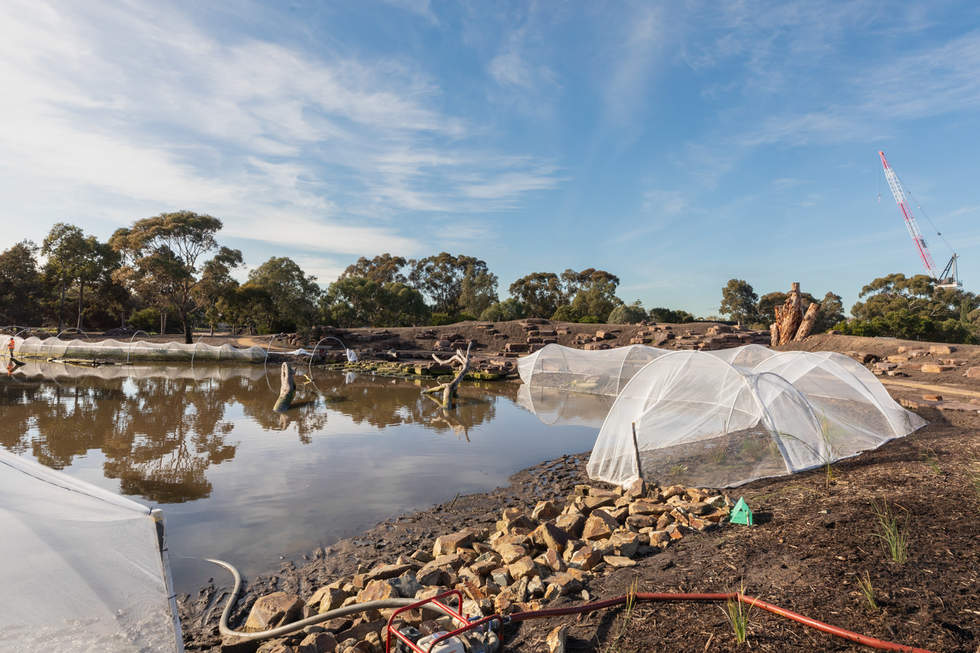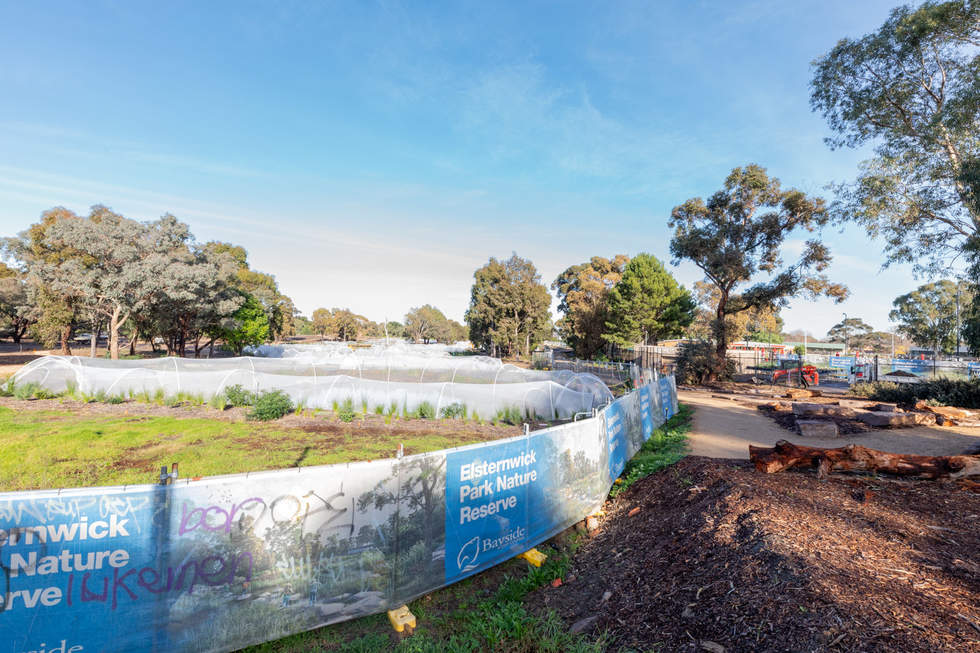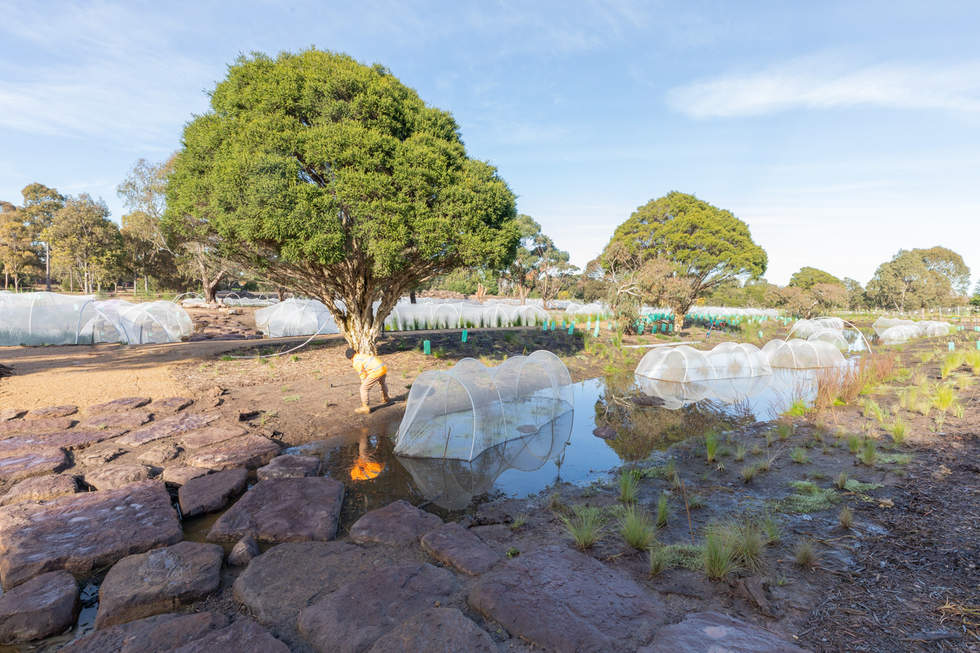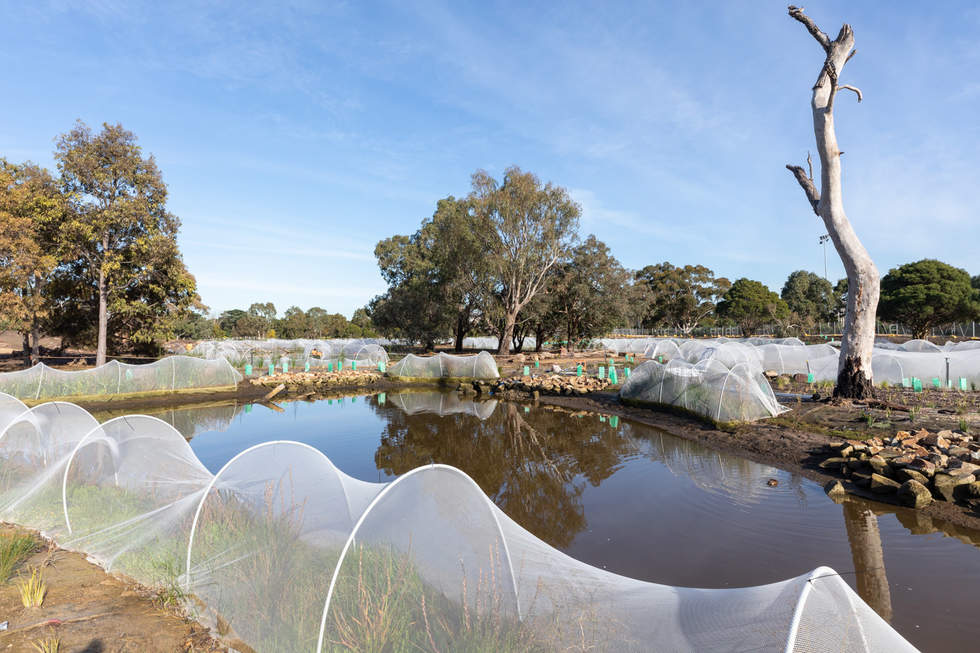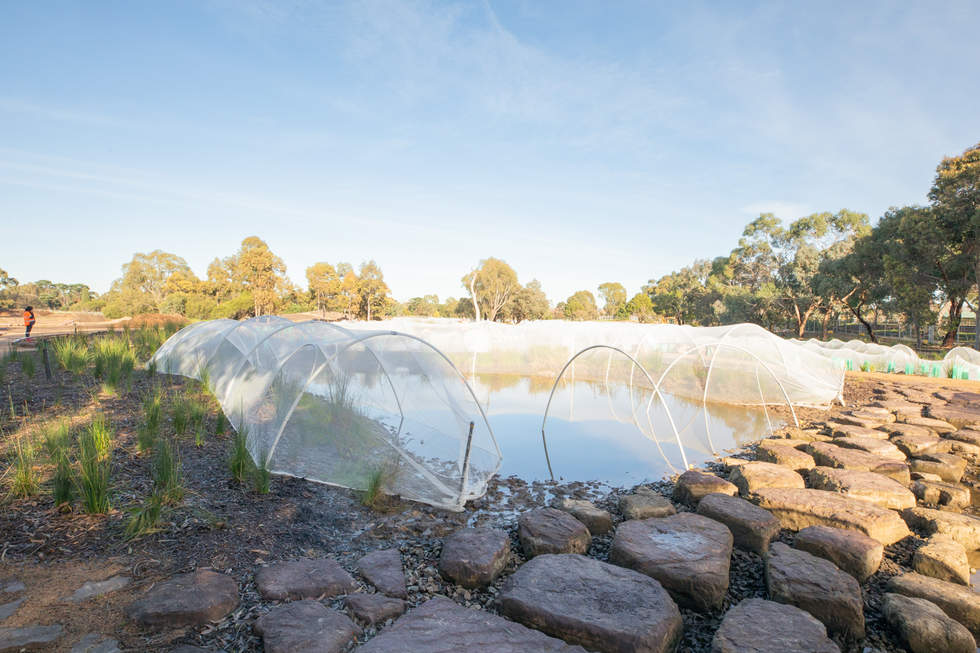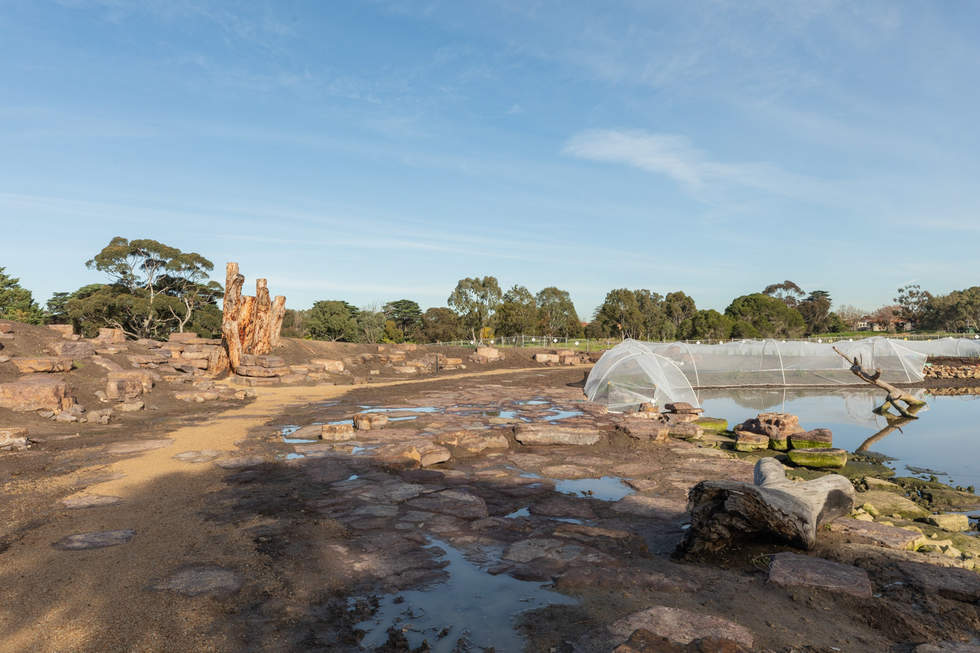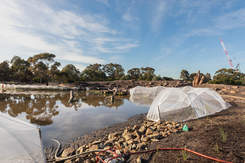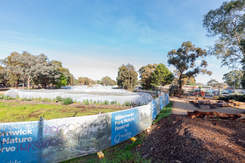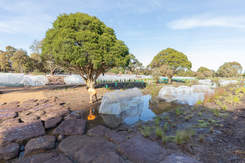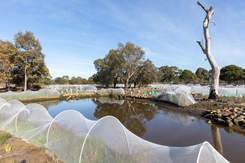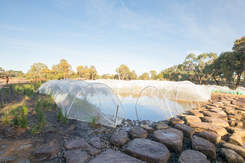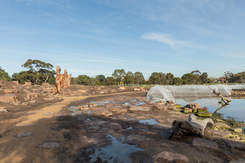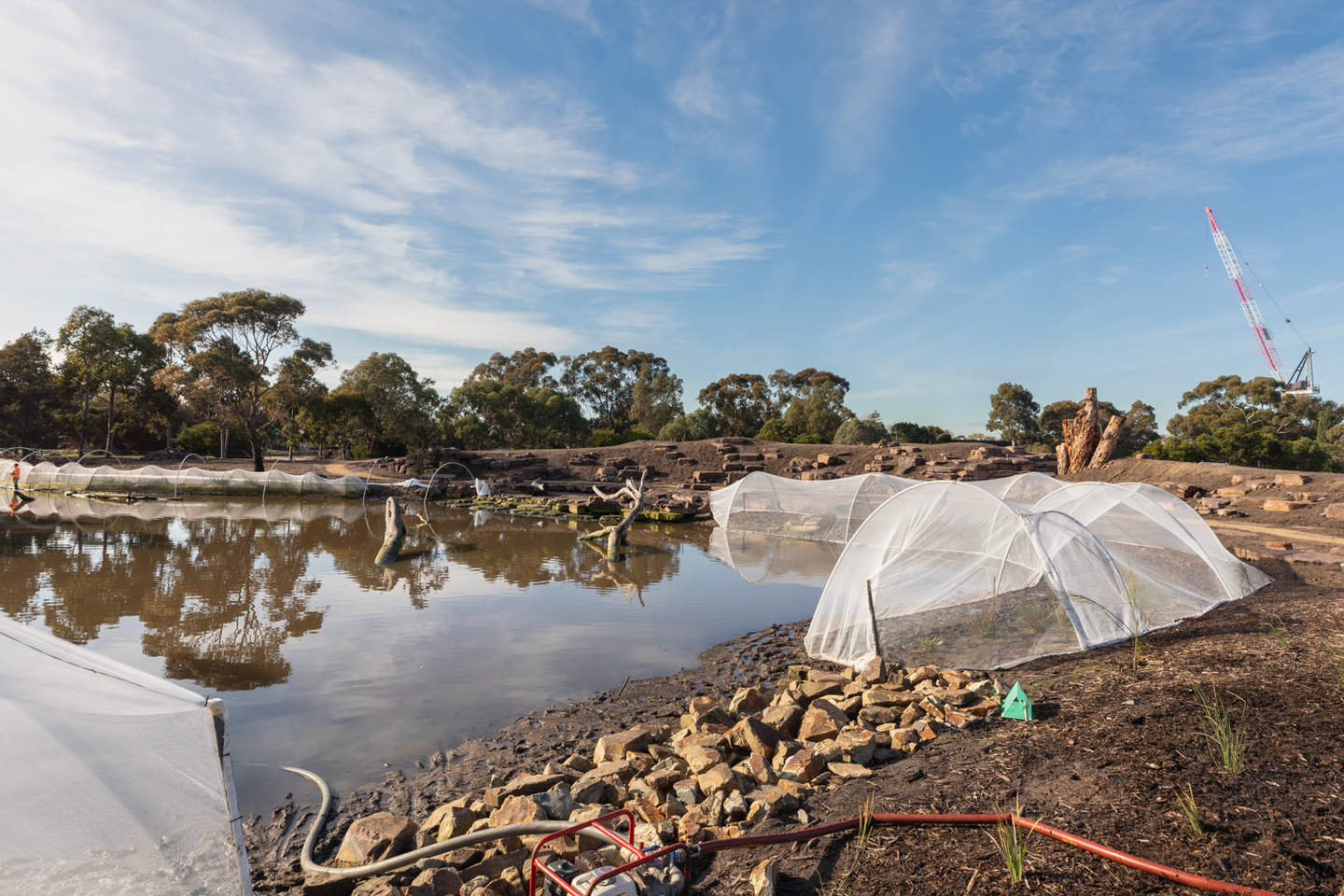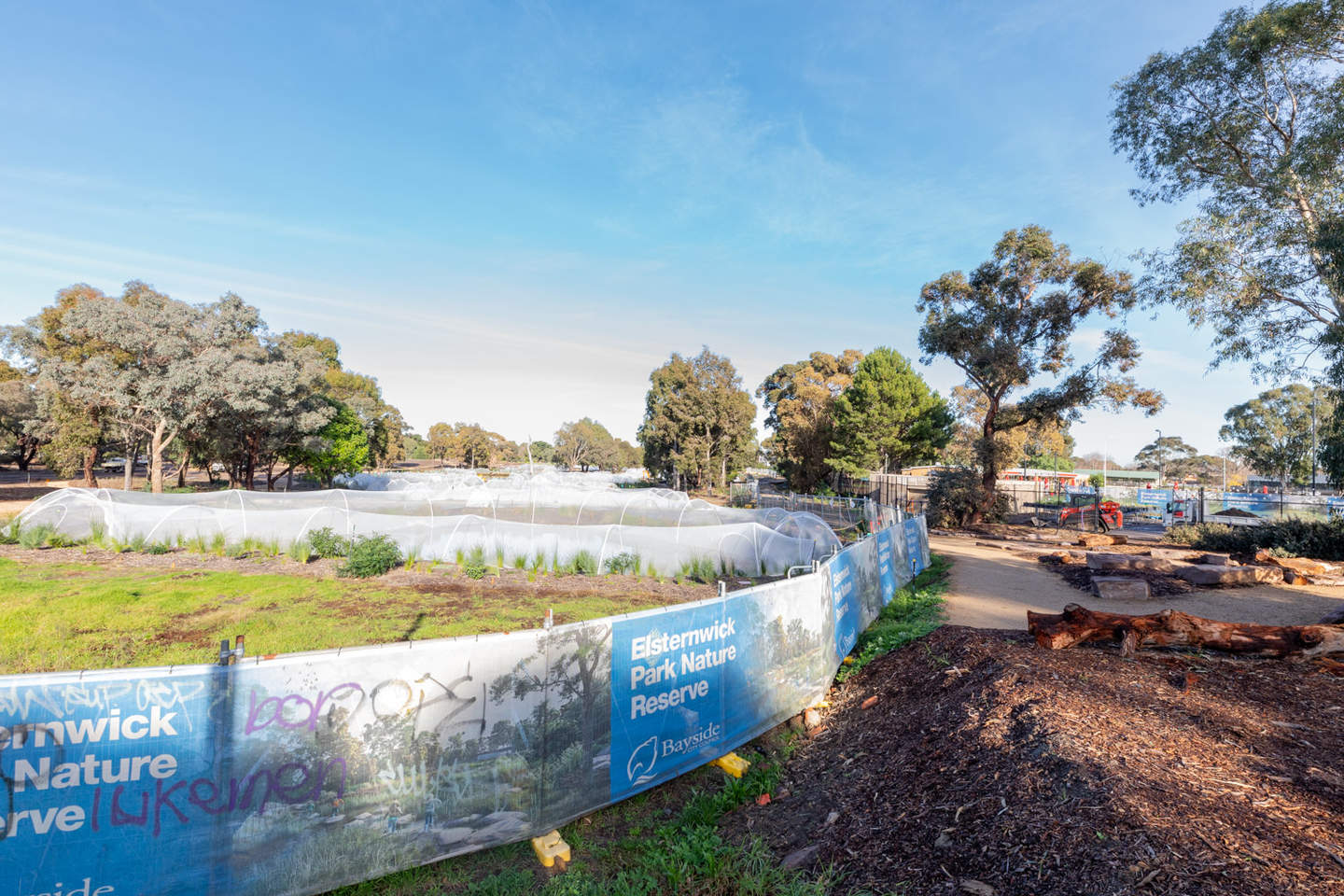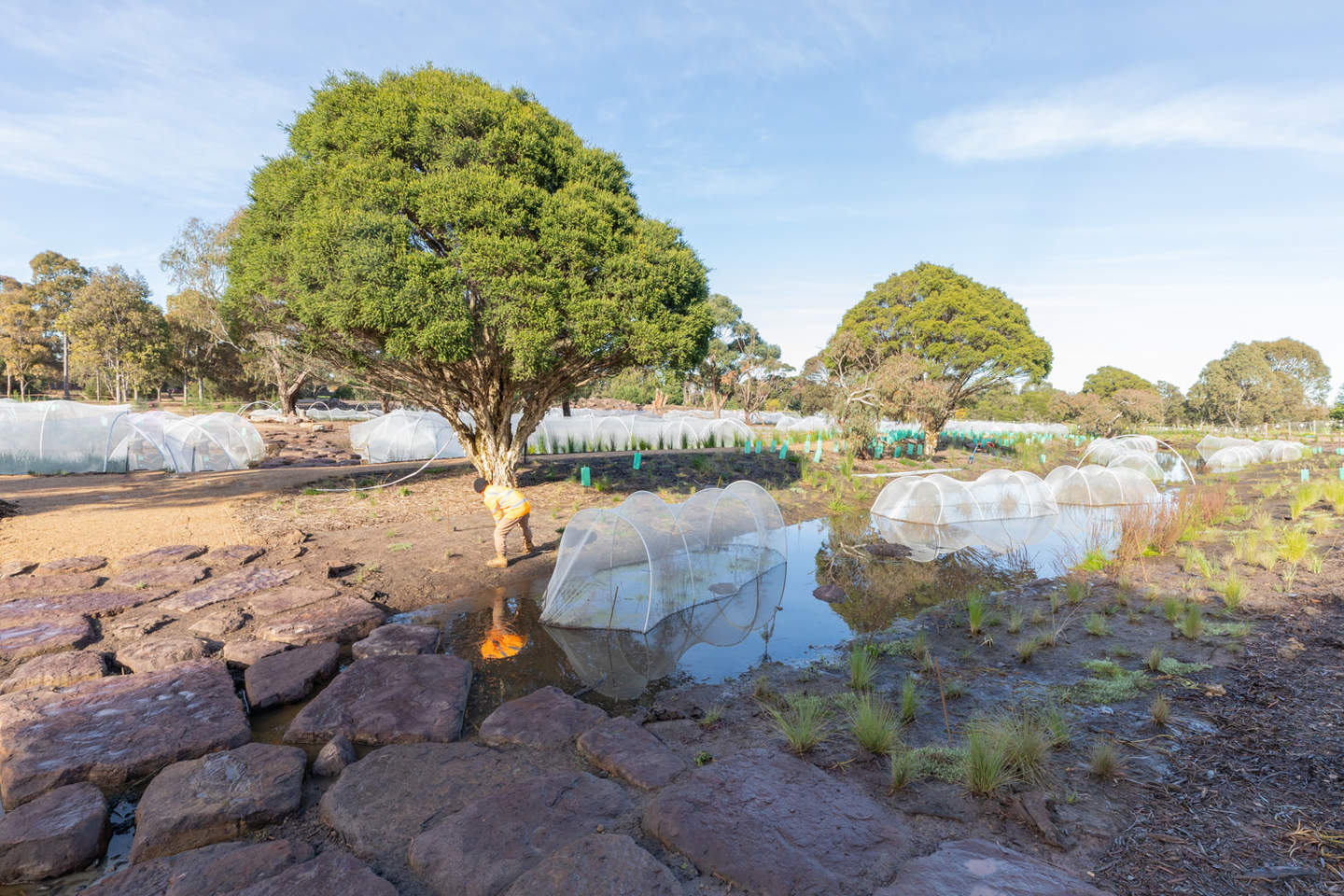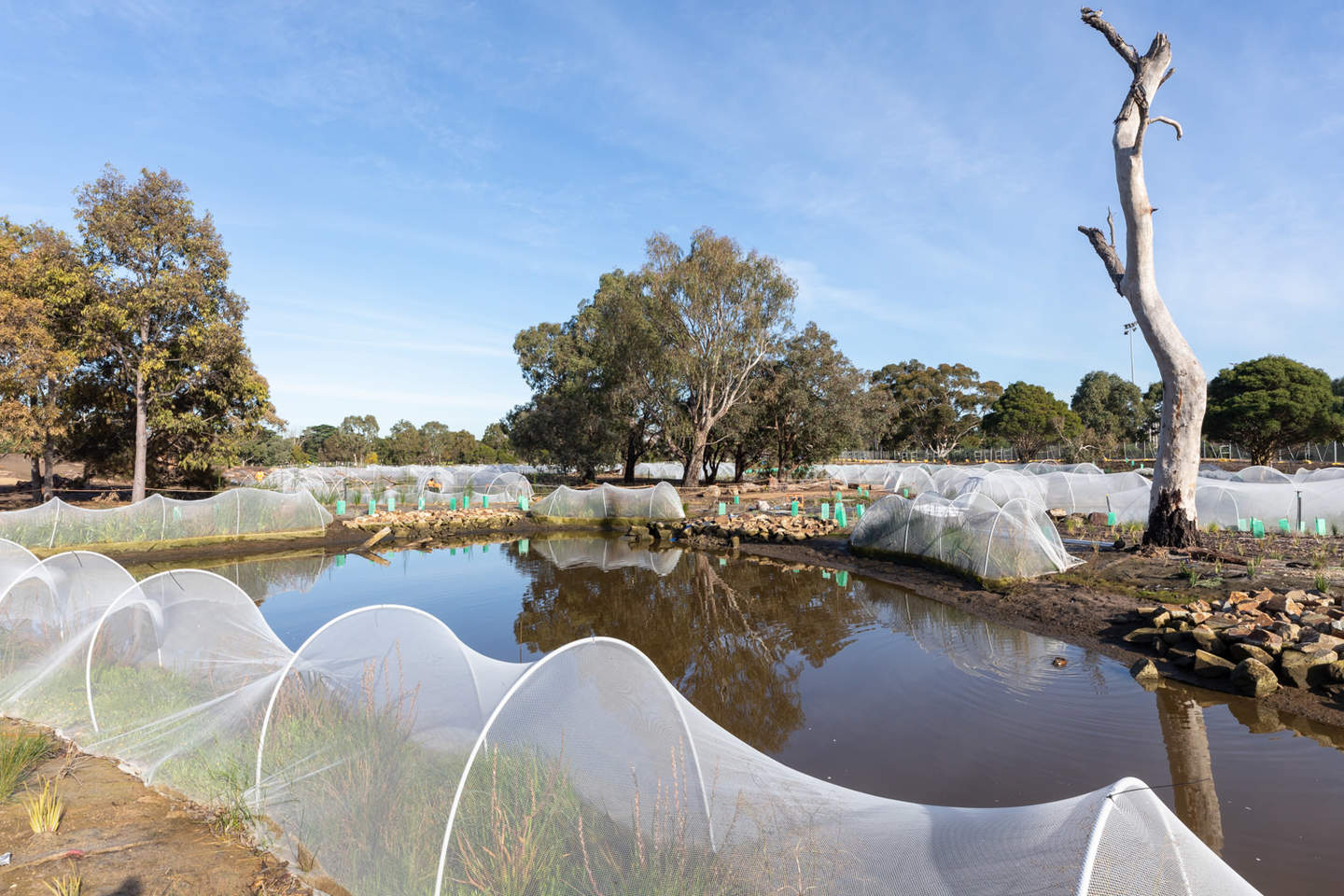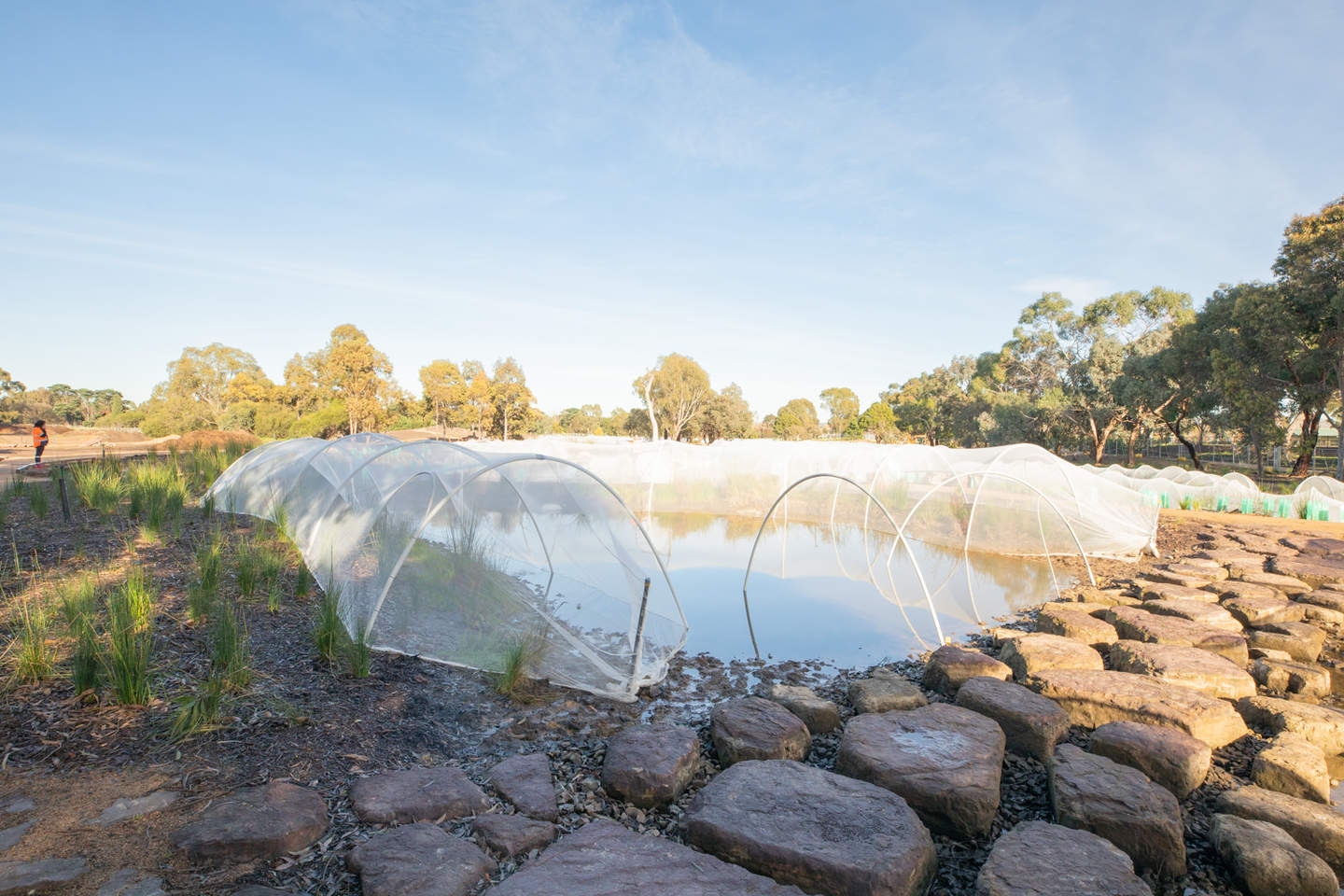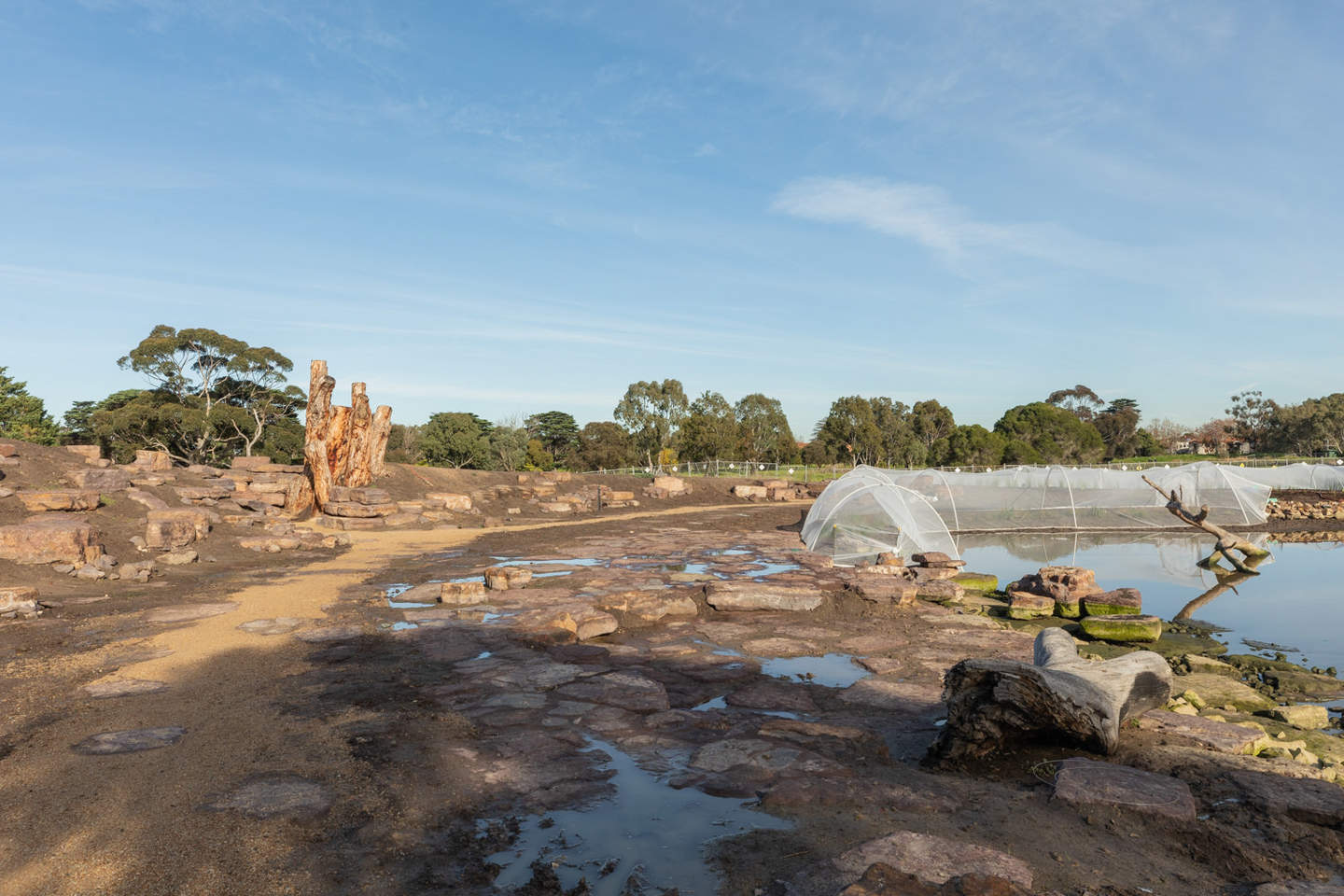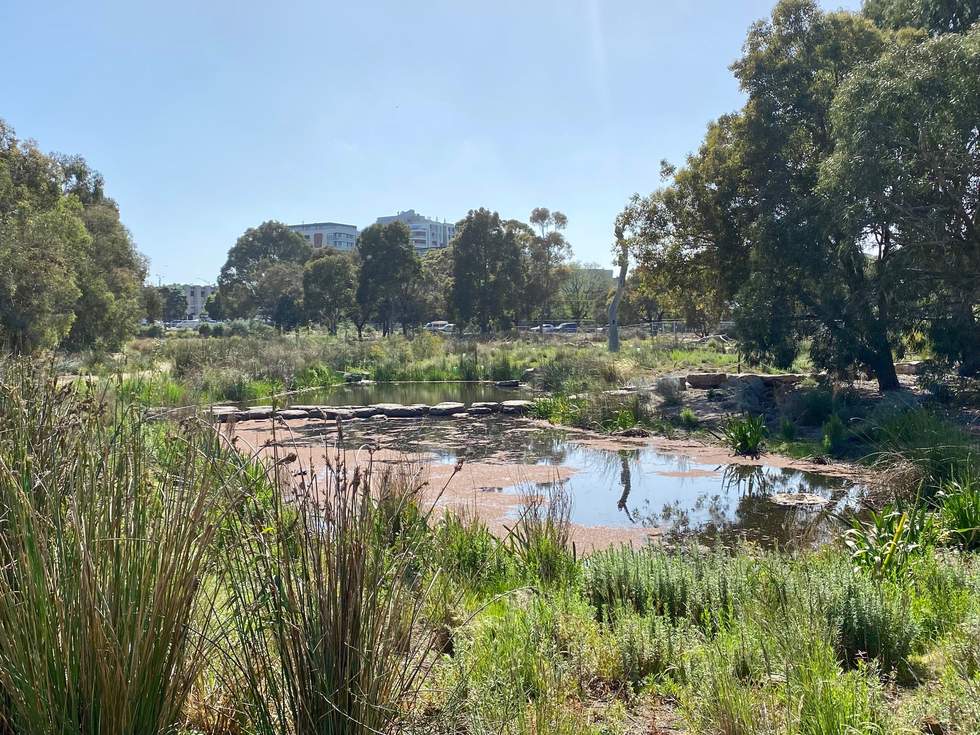
Chain of Ponds at Yalukit Willam Nature Reserve
This beautiful reserve offers a step back in time, reprising in part the ancient ecological life of our land of drought and flooding rains.
Prior to colonisation, the Bayside area was part of a coastal marsh ecosystem of meandering waterways, billabongs and gently undulating land.
This new reserve includes:
- more than 100 different indigenous plant species to attract an abundant range of native wildlife
- a chain of ponds and a large billabong as life sources, filling and receding through the seasons and creating the rich environment necessary to support native plants that adapt to the water level changes.
As you walk, look for the wildlife, listen out for the frogs and birds and enjoy the rare beauty of the indigenous flora.
This park is – as it has been for thousands of years - the land of Kulin Nations people.
Please be respectful by sticking to the paths and stepping stones and keeping dogs on a leash, allowing everyone to savour the beauty and serenity.
The creation of the Chain of Ponds is stage 1 of the Yalukit Willam (formerly Elsternwick Park) Nature Reserve Masterplan.
Chain of ponds
Six ponds stretch through the reserve and in time a seventh will be added.
These expanses of open water - ponds, a large billabong and two soaks - mimic the natural cycle, receding in summer and filling again in spring and winter.
How to get there
The park is bordered by St Kilda Street, New Street, Glen Huntly Road and Bent Avenue.
There is an ten minute walk from Elsternwick Railway Station.
The 246 bus travels along Glen Huntley Road and stops right outside the entrance.
The 67 tram stop 42 and 43 will drop you close to the entrance.
The best parking is New Street or Bent Street.
The closest public toilet is at Elsternwick Park South.
Chain of Ponds will be opening mid to late June 2022. It will grow and evolve through each year and season.
Creating habitat
This environment provides foraging and breeding habitat for many waterbirds, fish, reptiles, turtles, invertebrates and bats.
The length of the billabong is designed to accommodate take-off and landing of large birds such as pelicans.
Taller plants (such as Tall Spike-rush, Cumbungi and Common Reed) at the edges of open water provide marsh habitat for waterbirds, frogs and reptiles and smaller edging plants and rocks are perfect foraging sites and homes for waterbirds, frogs, skinks and rakali.
The swamp scrub provides foraging habitat for a range of insects, insect-loving birds, small reptiles and water birds such as the Nankeen Night Heron.
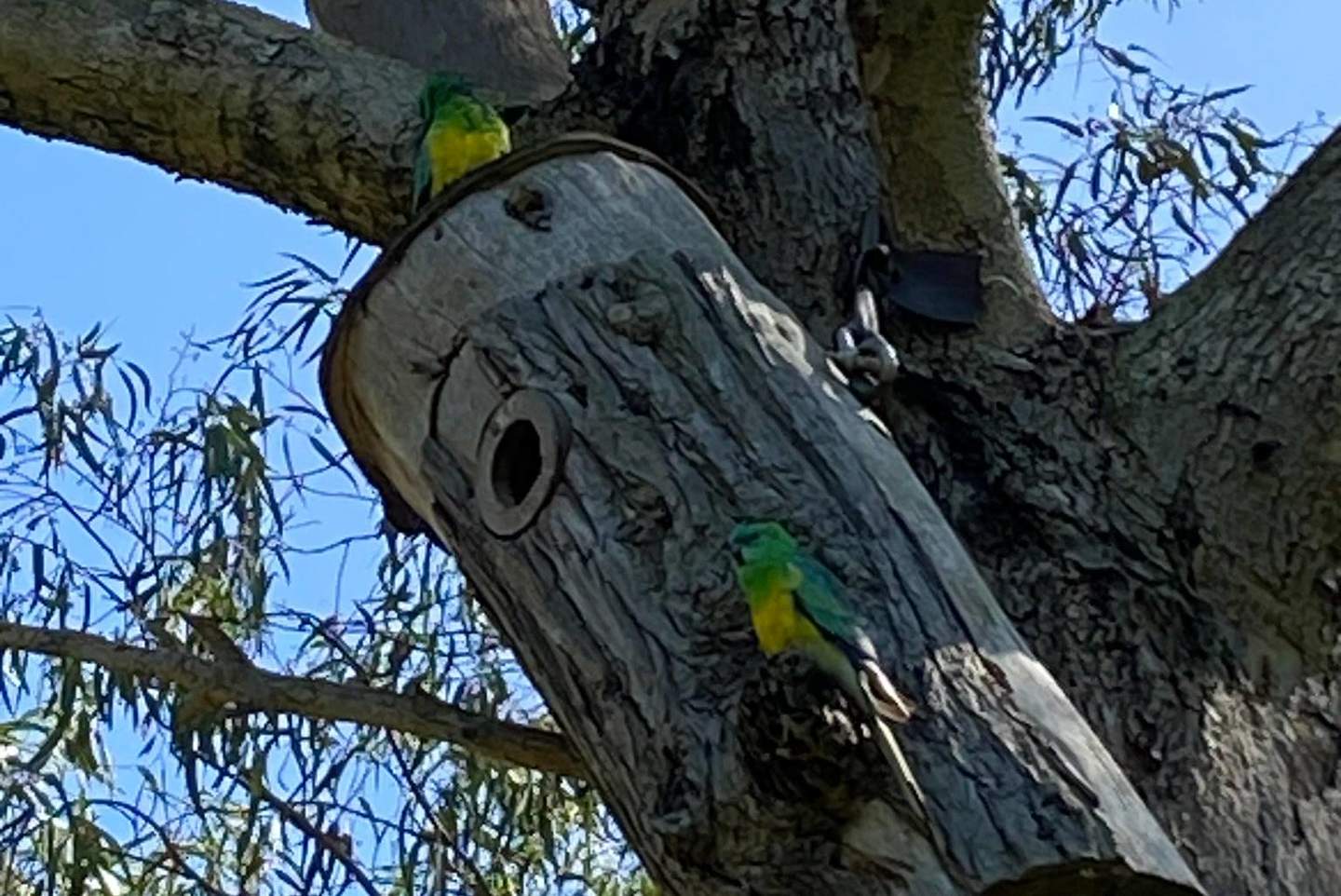
A boggy collaboration
Soak pits retain and filtrate stormwater and rainwater.
The water slowly percolates into the ground through several layers of earth.
The boggy land here between the boardwalk and the perimeter fence of the neighbouring bowls club was created by redirecting storm water run-off from the club.
The soak provides a fertile breeding ground for frogs, small birds and plants.
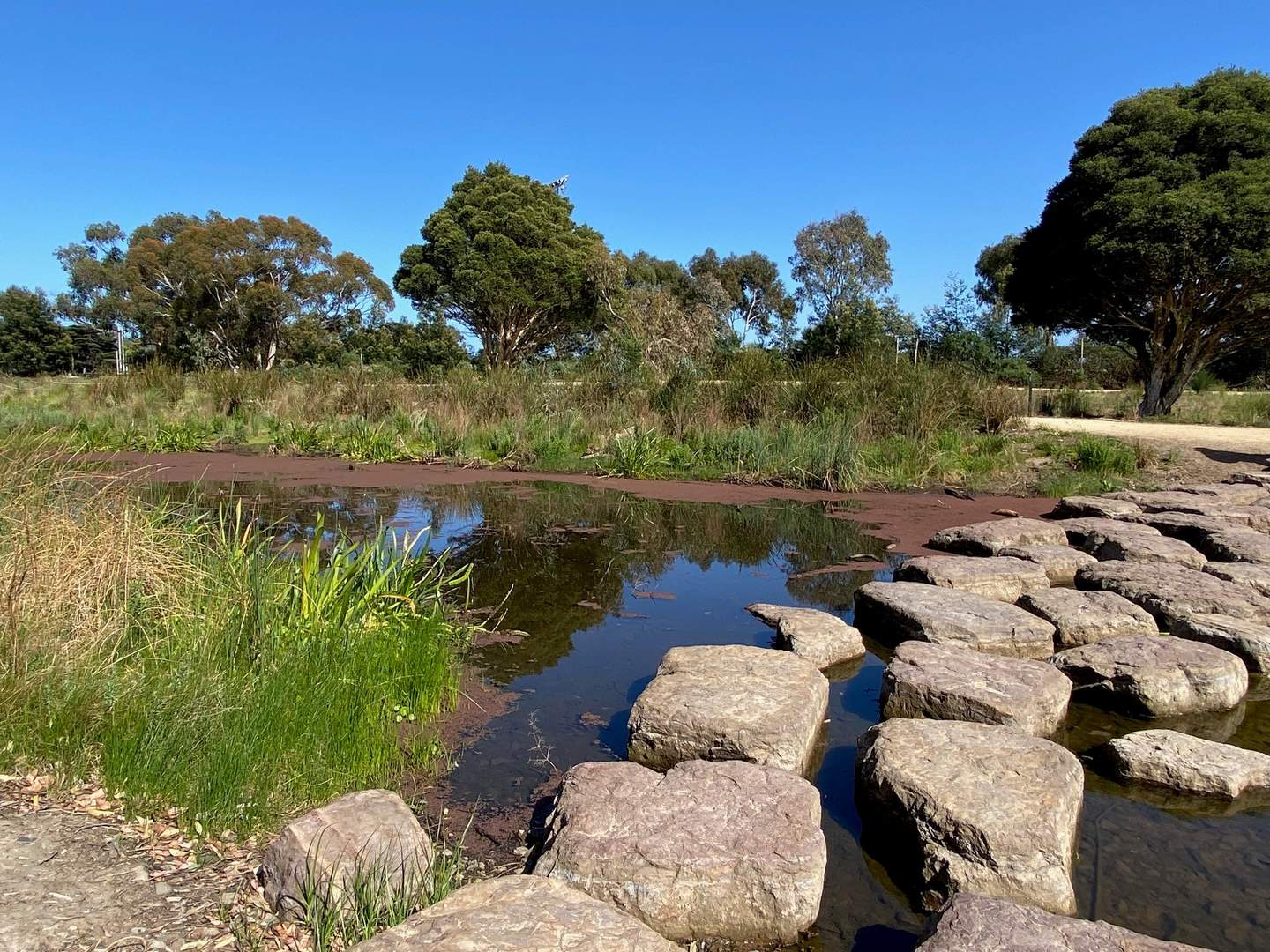
Harvesting and reusing water
This soak is a bio retention filter which removes pollutants from water as it drains through layers of soil and collects in the pit beneath.
The water is then pumped up to the top pond where it makes its way slowly down again through the ponds.
When water levels in the ponds become very low, water is redirected from Elster Creek and filtered here.
As well as providing a nutrient-rich environment in the reserve, the system helps keep polluted water out of Port Philip Bay.
Elster Creek carries urban stormwater with large volumes of common pollutants that discharge into Port Philip Bay.
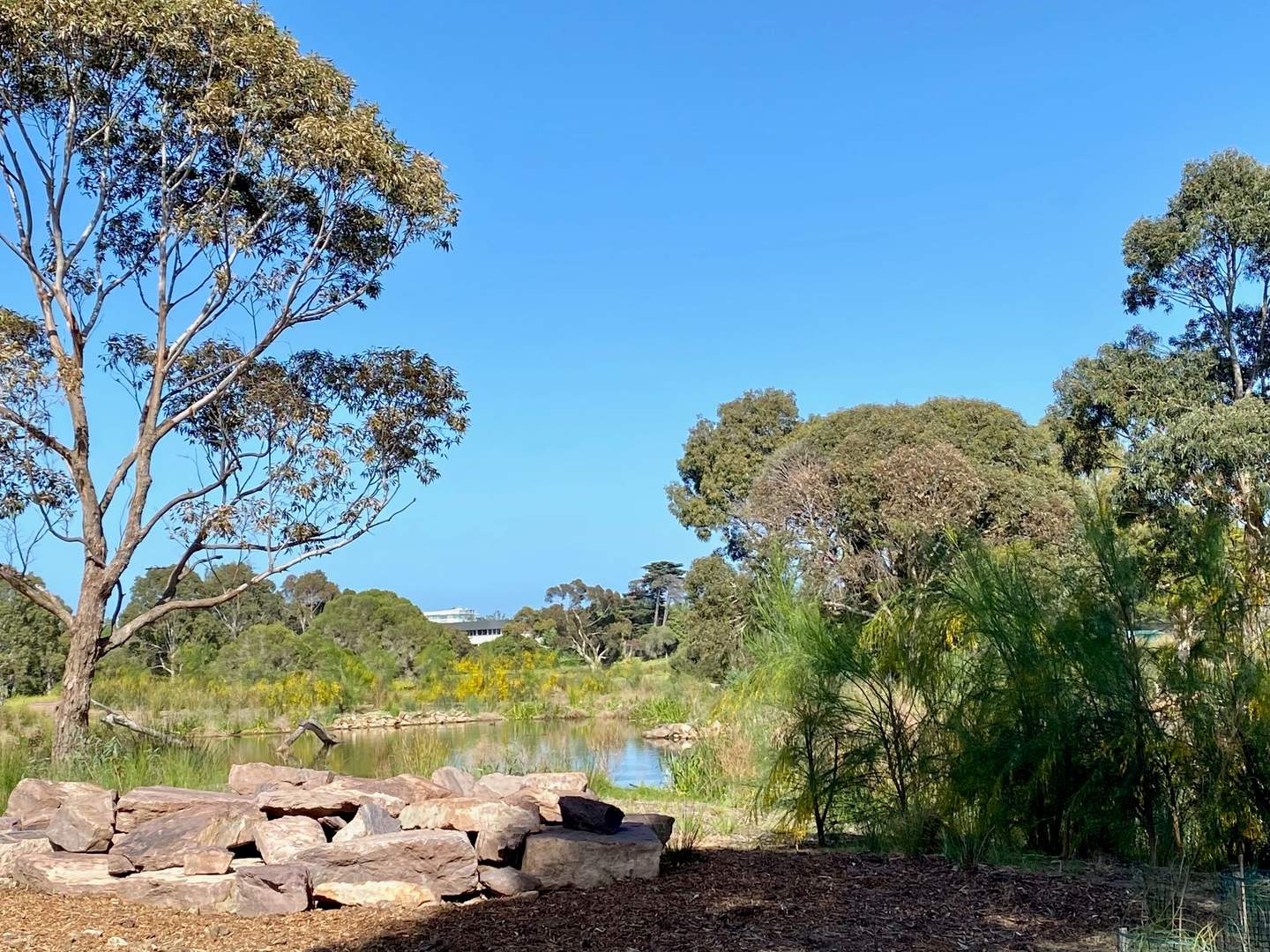
Wildlife friendly netting
The white netting was used extensively throughout the reserve to protect newly installed plants and help nature to thrive.
Young plants are at risk of being stripped by birds and the netting protects the plants while they establish and can support themselves.
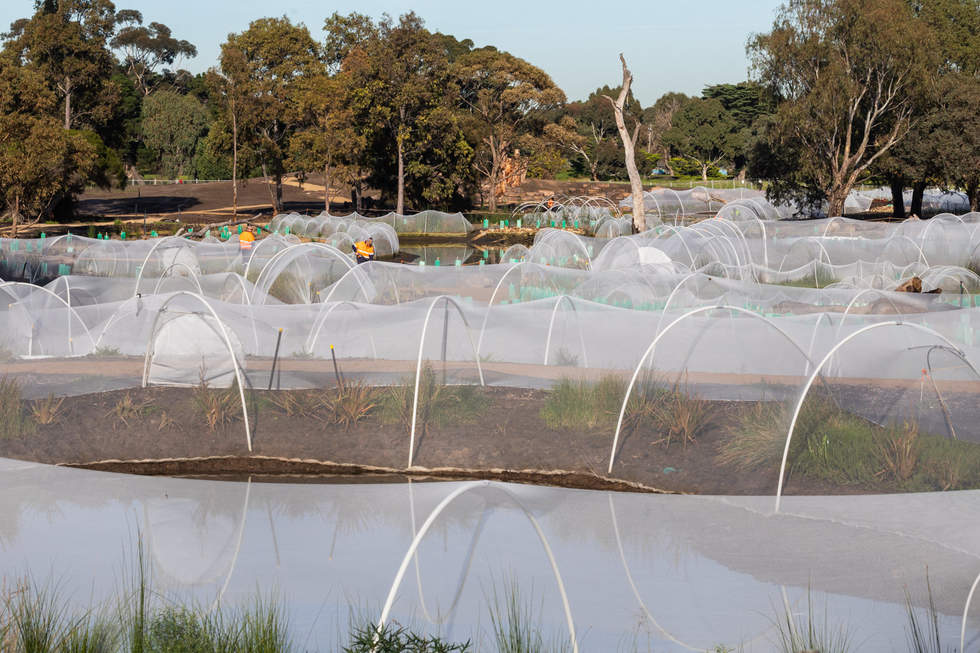
Meeting Place
This land is the land of the Kulin Nations people and an area the Yalukit-Willam clan called home.
Reflecting that culture and promoting First Nations values is an important element of the reserve design.
This Meeting Place has been designed in consultation with local First Nations groups and is a quiet, tranquil place, sheltered by the surrounding rocks and sitting on the edge of the water.
There are reports of a Meeting Place near Ripponlea Estate by the water, probably Elster Creek. So, it is likely an Aboriginal Corroboree site existed near to where this Meeting Place now stands.
This will be a place for sharing stories, traditional dance and music and the smaller central area will be used for ceremonial meetings. We hope to open the meeting place in 2024 when works adjacent to the area area completed.
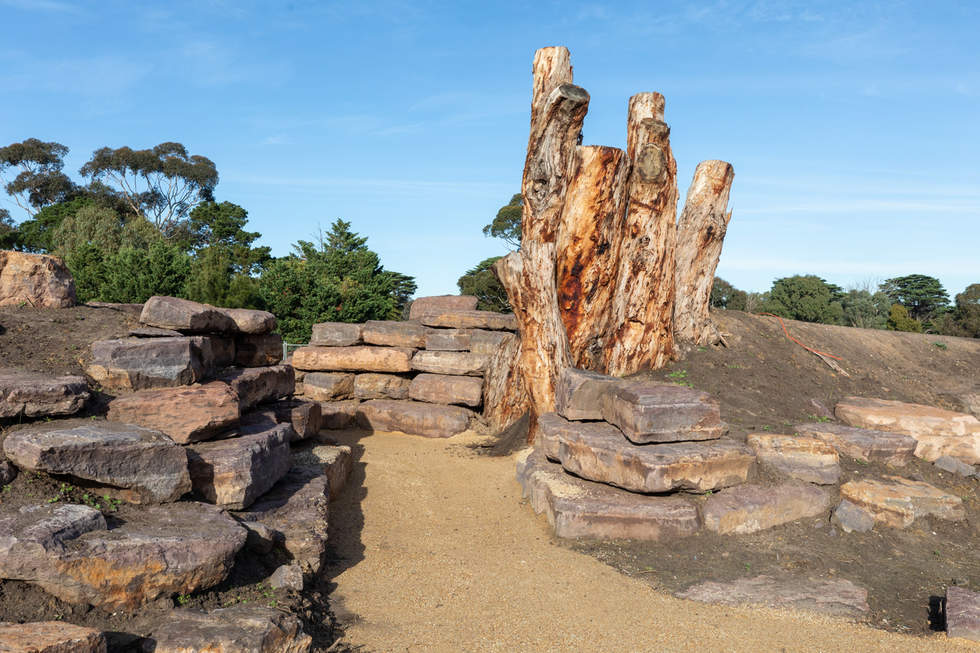
Respecting the seasons
Kulin Nations people define the year by six distinct seasons.
Each season is based upon the stars and the moon and reflected by the plants that grow and the behaviour of the animals, birds and insects.
Small areas of the reserve will reflect these seasons.
A large indigenous meadow will be seeded here to portray Wildflower Season.

Gallery of the development of Yalukit Willam Nature Reserve
These images appear larger in the gallery box
Four-legged friends are welcome on-leash in Elsternwick Park Nature Reserve.
This protects your dog (from snakes for example) and this precious environment. Disturbance to fauna could result in a loss or decline of populations and disturbance to foraging habitats could be detrimental to migrating birds for example.
Bayside has many other wonderful places to let your dog run free.
Thank you for cooperating and helping this wonderful reserve to flourish and grow.
